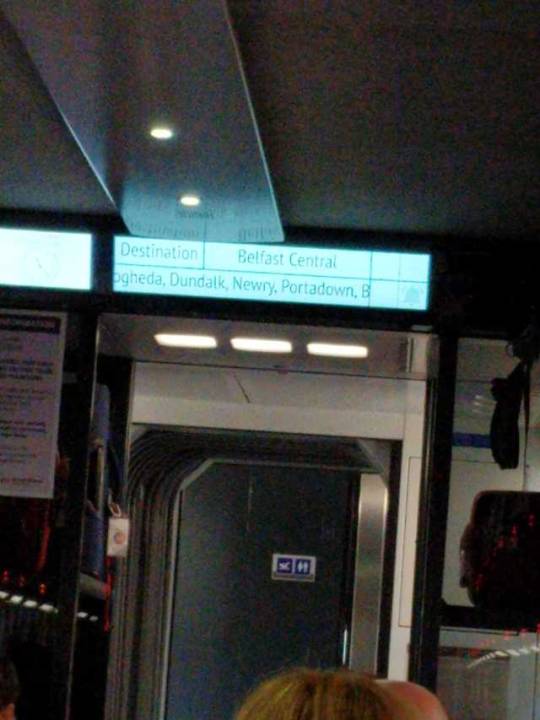Text
The Challenges of Life and Palette Knife Oil Painting.
I always liked abstract and impresism art. I’m a big fan of the works of Rembrandt, Kincade, Monet, and van Gogh. I had the chance to go see one of my favorite works of art in Paris at the Musee d Orsay, “Starry night over the Rhone” it was the highlight of my visit to the city. I think it’s amazing how art can tell a story.
A few years ago. I tried my luck with palette knife painting. Results…
View On WordPress
0 notes
Text
Never Again. My thoughts on Holocaust Remembrance Day
It is our duty to remember every human lost during this unspeakable crime to humanity. #HolocaustMemorialDay #WeRemember #HolocaustRemembranceDay #NeverAgain #NeverForget
Today marks the 74th anniversary of the liberation of the Nazi-run concentration camp Auschwitz-Birkenau where more than one million people died or were killed by the Nazis. The United Nations designated this day International Holocaust Remembrance Day. Why would anyone study the Holocaust? What makes the Holocaust stand out from other mass murders of the twentieth century is the sort of place…
View On WordPress
#Anti-semitism#discrimination#holocaust#holocaust memorial day#Holocaust remembrance day#Politics#society#why#why we fight
0 notes
Photo
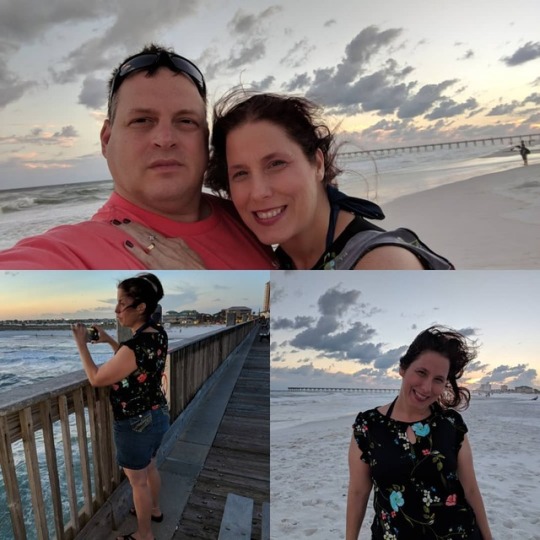
Enjoying the sunset with my honey. (at Casino Beach) https://www.instagram.com/p/BosPaL0gtUI8NiLdcH8k7_gWNlF83V2U5LksOw0/?utm_source=ig_tumblr_share&igshid=tauzx4x8s4e
0 notes
Text
While waiting on our cab driver on Chichester Street by the Belfast city hall to drive us to the peace walls, I was thinking back to how such a wonderful city dealt with years of terrorist bombings and shootings that became part of normal everyday life. It was Sunday at 9:45 in the morning when we arrived at the gate. We could not travel by car into this particular neighborhood because the gate did not open until ten. I thought that was strange that people that live in these neighborhoods, voluntarily accept that they did not have full freedom of movement. You can use the pedestrian gates at all hours, but you can only drive through the gates at certain hours. Think of the gang violence in Los Angelas and if the fix was to build 25-foot high walls between the rival gang neighborhoods to keep law and order in Compton. Along some of the walls, thorny bushes would be planted to deter factions from digging underneath. That is pretty much what happened in the city of Belfast between the unionist and nationalist paramilitary neighborhoods. There are more than 100 of these “peace walls” that separate the Catholic and Protestant Areas in Northern Ireland.
Our cab driver, Gerald (his name is changed to protect his identity) has lived in the city his whole life and participated in the some of the violence that occurred during the 30-year conflict known as the Troubles. He was quick to point out that it was not the religious protestant vs. Catholic conflict that is portrayed in the news media. He told us that this was a lie told by the British government. It was a conflict centered around whether or not Northern Ireland should cease to be part of the United Kingdom and join the Republic of Ireland. There are paramilitary organizations on the other side that wish to remain part of the United Kingdom. The conflict between these two factions spilled over into everyday civilian life. Bombings were common. Police and the British army troops were targets of the Irish Republican Army (IRA). Civilians were sometimes collateral damage. He served as a volunteer with the Irish Republican Army and did time in confinement in a British prison for a bombing of a government building. Fortunately, no one was killed. As he told us, everyone has a history. He spoke about how he was held in confinement by the British and not formally charged with a crime. A law in Northern Ireland allowed authorities to hold suspected wrongdoers for seven days without being charged before they had to release them if no charges were filed against them. He now drives a cab and earns extra money educating the tourists about the conflict in Northern Ireland. Much of what he told us, I was skeptical of. When I looked into what he told us, I was able to find some truth to what he was telling us. However, I also keep in mind that each side has their own story.
“History is written by the Victors” Winston Churchill
What was strange was he did not want to drive down some of the heavy Protestant neighborhoods. It was what the locals called Marching Season where factions loyal to the British celebrate the victory of the Battle of the Boyne. There is a bank holiday on the Twelfth of July celebrating when William of Orange won a crushing victory, which secured the Protestant ascendancy in Ireland for generations. Gerald and most other Irishmen that live in Northern Ireland do not take that day off. It just does not mean anything to him.
The Battle of the Boyne fought in 1690 remains a controversial topic today in Northern Ireland where some Protestants remember it as the great victory over Catholics that resulted in the sovereignty of Parlement and the Protestant monarchy. In recent decades, “The Twelfth” has often been marked by confrontations, as members of the Orange Order attempt to celebrate the date by marching past or through what they see as their traditional route. Some of these areas, however, now have a nationalist majority who object to marches passing through what they see as their areas. Each side thus dresses up the disputes in terms of the other’s alleged attempts to repress them; Nationalists still see Orange Order marches as provocative attempts to “show who is boss”, whilst Unionists insist that they have a right to “walk the Queen’s highway”. Since the start of The Troubles, the celebrations of the battle have been seen as playing a critical role in the awareness of those involved in the unionist/nationalist tensions in Northern Ireland.
Lenihan, Padraig (2003). 1690 Battle of the Boyne. Tempus.
Northumberland Street gate, while we were waiting for the gate to open up, Gerald would tell us how the riots started at the beginning of the conflict over a senior British official who was allegedly heard laughing at the poor conditions the nationalist were living in. This was the spark that lighted the powder keg that was building for years.
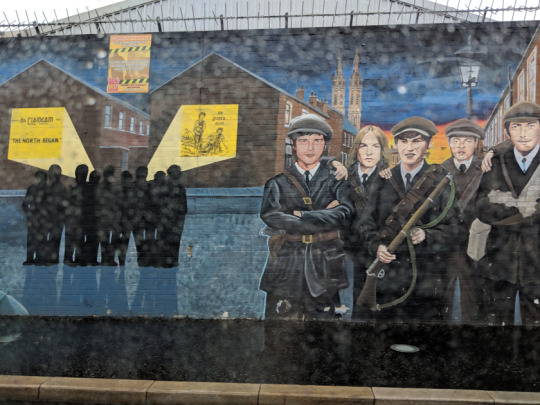
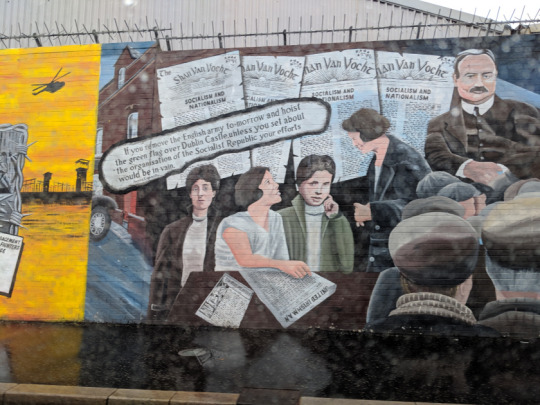
He would explain what the murals located at the gate meant. It was interesting to hear how they sympathized with the Palestinian movement in Isreal and how an alliance could have spread to the outside of the island of Ireland and why there was a mural of Fidel Castro in Belfast. It was no secret where the loyalties lay. The Cuban leader, Fidel Castrol spoke in support of the Irish Republican Army movement and on the Irish hunger strikes that took the life of Bobby Sands, which was one of the most heroic chapters in history. Those words were not lost on Gerald and people who aligned themselves with the IRA as he was one of the few world leaders that spoke in support of them. It was strange to see the glorification of a man that was responsible for the ruthless oppression of his own people.
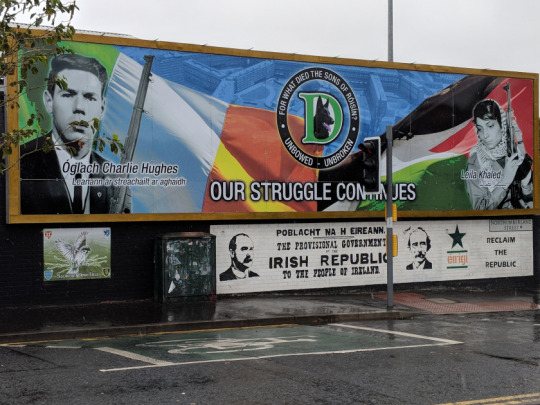
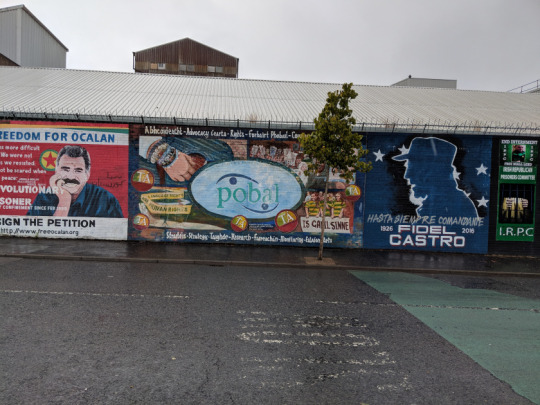
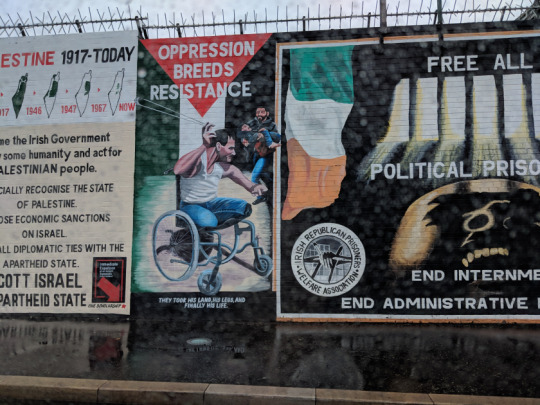
When we would look at one mural on the Protestant side of a wall the separated two neighborhoods, he would only talk about the mural when we were back in the cab. The mural of Stephen McKeag located in the lower Shankill area is especially impressive. Anyone looking at this from the outside would think of this person as a hero. However, McKeag is linked to 14 murders including the murder of a hairdresser. Some Loyalist thinks of him as a hero and a soldier fighting against Republicans in his community. Republicans like Gerald think of him as a murderer, drug pusher, and drug dealer. McKeag died of a drug overdose in 2000. I can tell this mural hits a nerve with Gerald. Gerald would go on and tell us that he is nothing more than a druggie and a killer. McKeag is regarded as a sectarian killer to some and as a hero to others. I think what bothered Gerald was how he is depicted on the mural as a great freedom fighter while his side is fighting for unification between the north and the south.
Gerald drove us to a section of the wall, where people would place messages on the wall. Some of the messages were pointed at some of the situations happening in the United States with its immigration policy. In my research, this wall was twice as high as the Berlin Wall. It is a massive structure.
This is the area where it was too dangerous for public buses to operate so the Falls Road Taxi Service was formed to serve the Catholic areas of the city. Officially, Belfast’s government does not license these taxi services but instead prefers to let them operate on defunct bus routes. Protestant cab drivers did not operate in Catholic areas and catholic cab drives did not operate in Protestant areas. To do so would place their lives in danger.
I do not know why, but I thought back to the Death Star analogy mentioned in the movie “Clerks” where contractors of the second Death Star in the Return of the Jedi movie were killed when the rebels destroyed the second Death Star. While we drive to the other Catholic side, I asked him a question that was burning in my mind through the research and books I have read. Were the construction workers called in to rebuild buildings damaged by the bombings and other civilian workers working for the government really targets of the IRA? He responded that these people were collaborating with the enemy and they were targets just like the unionist paramilitary groups and the British Army were. It was chilling to know, an electrician or a plumber trying to support their family could be shot and killed just because of who hired him or her.
Gerald considers himself Irish. He says he now provides consolation to veterans of other conflicts. He holds a Republic of Ireland passport thanks to the Good Friday Agreement that was signed in 1998 and went into effect on December 2nd, 1999. One of the provisions was any resident living in Northern Ireland could choose if they were British or Irish and hold the passport either a British or Irish passport. Although most of the violence has calmed down, there are news reports of different factions intimidating people thought to be on the other side. This was explained to me at a pub in Belfast. I met a man who recently moved to Northern Ireland from England. He is protestant and his wife is Catholic. It was never an issue in England but while living in Belfast, it is an issue, and people look down on their marriage. It is still apparent more than twenty years after the Good Friday Agreement was signed, tensions are still present today although most of the fighting is in the political arena. The solution to this problem is far from being solved and the European Union is forcing the United Kingdom to come up with a solution to keep the Good Friday Agreement in place as the deadline for Brexit approaches.
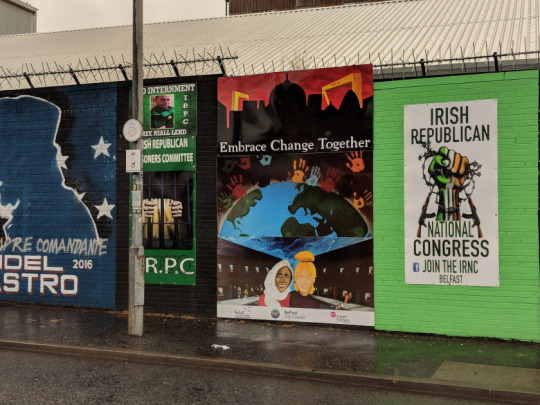
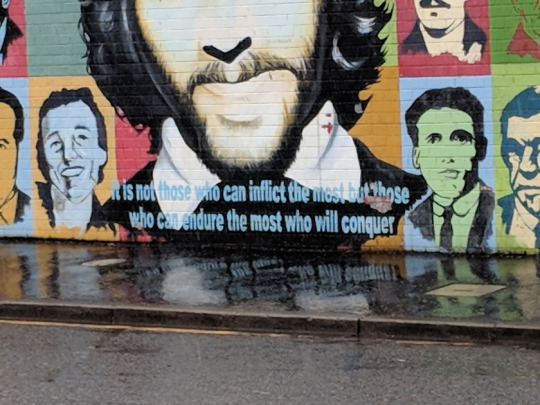
A Walk Through Belfast’s Troubled Past: The Peace Walls While waiting on our cab driver on Chichester Street by the Belfast city hall to drive us to the peace walls, I was thinking back to how such a wonderful city dealt with years of terrorist bombings and shootings that became part of normal everyday life.
#battle of the boyle#belfast#Brexit#falls road#Good Friday Agreement#ira#northern ireland#peace walls#republican#shankill#stephen mckeag#The Troubles
0 notes
Photo
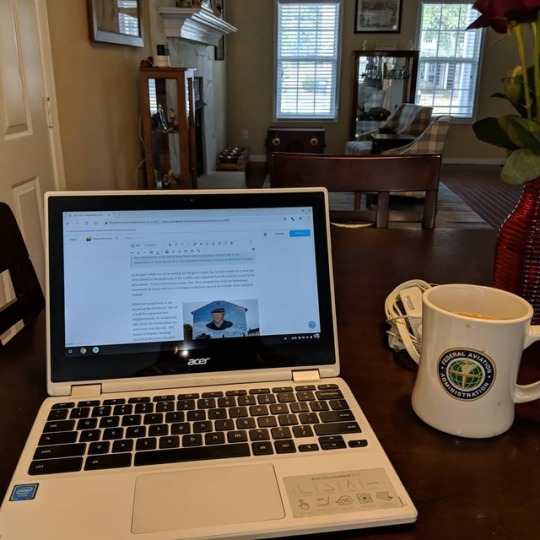
Writers block is gone, working on my 3ed installment of the conflict in Northern Ireland. https://www.instagram.com/p/BopDo0pgcYo8vb6bFLX_9MVhEcMjH8660b184s0/?utm_source=ig_tumblr_share&igshid=1mh052hirvqb9
0 notes
Text
A Walk Through Belfast's Troubled Past: Irish border question
A Walk Through Belfast’s Troubled Past: Irish border question
As the deadline inches closer for the United Kingdom to solve the border problem in Ireland in the wake of its removal from the European Union, there has been a lot of talk in the news. It is a bitter divorce where one side does not want to give an inch to the other side. One question remains is what to do with the Border between Northern Ireland and Ireland.
Since the 1998 Good Friday…
View On WordPress
#Border#Brexit#European union#Good Friday Agreement#great Britain#ireland#irish-uk border#northern ireland#Politics#Travel
0 notes
Text
In order to understand the sectarian violence that plagued Belfast and Northern Ireland for many years, you have to start one hundred and three miles to the South in the city of Dublin. The conflict known as the troubles, involved mostly Protestant loyalists, who wanted to remain part of the United Kingdom, against mostly Catholic republicans, who wished to unite with the Republic of Ireland.
In 1916, on Easter Monday in Dublin, the Irish Republican Brotherhood, a secret organization of Irish nationalists led by Patrick Pearse, launches the Easter Rebellion, an armed uprising against British rule. Assisted by militant Irish socialists under James Connolly, Pearse and his fellow Republicans rioted and attacked British provincial government headquarters across Dublin and seized the Irish capital’s, General Post Office. Following these successes, the Irish nationalists proclaimed the independence of Ireland, which had been under the British rule for centuries, and by the next morning were in control of much of the city.
Later that day, however, British authorities launched a counteroffensive, and by April 29 the uprising had been crushed. Nevertheless, the Easter Rebellion is considered a significant marker on the road to establishing an independent Irish republic. Following the uprising, Pearse and 14 other nationalist leaders were executed for their participation and held up as martyrs by many in Ireland.
While walking on O’Connell Street in the Irish Capital of Dublin, one summer evening, I asked for directions to a ATM from a local resident. He gave me directions which to my surprise it was on the same block. While waiting on a cab, strangely he approached me and started to tell me about the Easter Rising and explained that evidence of the uprising was still on this street. He explained that the bullet holes on the angles on the O’Connell Monument were from the 1916 uprising. He informed us of the bullet holes in the are still in the side of the building of the General Post Office and told us the story of the Irish Mythological Hero of Cu Chulainn. It was amazing, I was getting a short Irish history lesson from an Irishman on the street who was very proud of his heritage and the hard-fought independence from the British. We walked over to the O’Connell monument to see what he was talking about. There were two teenagers sitting on the monument. They preceded to show us where the bullet holes were and explained to us about the uprising.
We walked over to the General Post Office building where it was the headquarters of the men and women who took part in the Easter Rising. Sure enough, there were bullet holes in the side of the building. It is hard to believe such a lively street filled with shops and restaurants was a war zone a little over hundred years ago with evidence still around.
The Irish Nationalist chose the General Post Office (GPO), the communications heart of the country and the centre of Dublin city, as the building on which to hoist the flag of an Irish republic. For nearly a week, the rebels held the GPO. Fighting here and in other parts of the city was intense with civilians bearing the greatest hardship. With the building on fire and crumbling, they tried to break through the surrounding army cordon but failed. Patrick Pearse, realizing the futility of further fighting, took the decision to surrender.
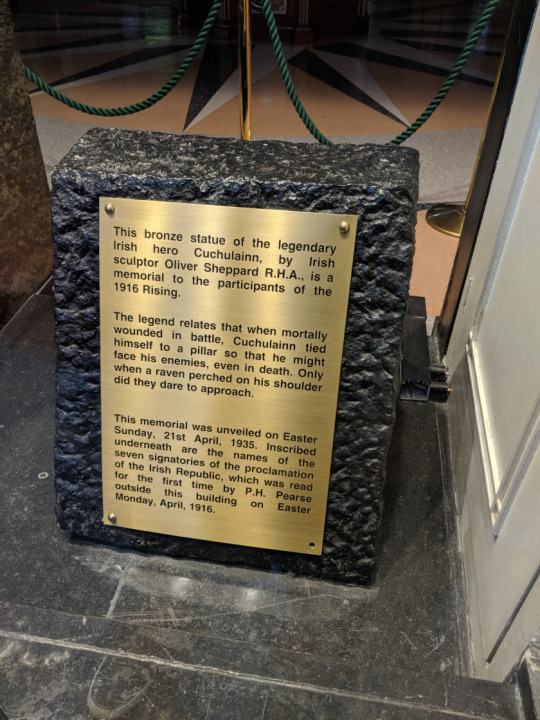
If you take the time to walk around Dublin you will see evidence of the hardship and sacrifice the Irish have endured achieving their independence. The Easter Rising was notable for its sniper duels. It was a way of picking off combatants who strayed into sight, although sometimes targets were picked indiscriminately. For the rebels, it was essential to their survival that enemy snipers and machine gun nests were disrupted and forced to move position.
The picture below was taken from inside of the Dublinia Museum that highlighted the Viking and Midevive history of Dublin. In 1916, Dublinia (then the Synod Hall) was one of the outposts used in the Rising. Three armed rebels from the socialist Irish Citizens Army (ICA) were stationed here. Their task was to delay expected British troops heading to Dublin Castle where they had planned a take-over.

The Anglo-Irish treaty was signed in 1921 ending hostilities between the IRA and the British. The Treaty gave the 26 southern counties of Ireland now the Irish Free State a considerable degree of independence, however, Northern Ireland would remain part of the United Kingdom. Some were not happy with the arrangement. A civil war broke out between pro-treaty forces and anti-Treatyites, or republicans. T The war ended in 1924, but tensions would still carry on over the years. As you look toward the North, it is apparent even today there is still desire for a united Ireland.

A Walk Through Belfast’s Troubled Past: The Dublin Connection In order to understand the sectarian violence that plagued Belfast and Northern Ireland for many years, you have to start one hundred and three miles to the South in the city of Dublin.
0 notes
Photo

Walked Sandy Row row tonight. Very interesting to piece together what I read over the last few years. (at Sandy Row)
0 notes
Text
While I was exploring the streets of London, I noticed something interesting on the side of a building. It was a plaque indicating that the building used to be a consulate for the Republic of Texas.
The Texas authorities convinced that they might have to carry on as an independent nation, decided to establish commercial relations with European powers and so strengthen their position. Accordingly, the Republic of Texas’s secretary of state, James Pinckney Henderson was sent to London early in October 1837 to open negotiations with Lord Palmerston. The British were fearful that recognition would jeopardize their friendly standing with Mexico and declined to enter into formal relations; they did consent, however, to admit Texas commerce to British ports on their own terms. In 1845, Texas struck a deal to be absorbed into the United States, the Lone Star’s London legation was disbanded. The Republic’s representatives skipped town with a $160 bill left unpaid.
Republic of Texas Embassy in London While I was exploring the streets of London, I noticed something interesting on the side of a building.
0 notes
Text
While in Paris, when most people want to get their art fix, most people head over to the Louvre. While it’s one of the most famous art museums in the world, it is very popular with visitors spending time in the city of lights. Crowds there can be horrendous and unpleasant. There is an alternative to the Louvre in the shape of an old renovated train station. Musée d’Orsay is very impressive. I always wanted to Vincent van Gogh’s work in person. The Musée d’Orsay had a many of his works so when I was in Paris in 2016, I decided to skip the Louvre and opted for a visit for the Musee d’ Orsay instead. You will also see the works of Monet, Pissarro, and Renoir. It was a train station built for the world’s fair of 1900. By 1939 the trains were too long for its use and it was closed. Over time it was used as a parking lot, theater, and even a reception for prisoners of war. In 1977 the French government decided to turn it into a museum and it was opened in December of 1986. It houses the largest collection of impressionist (over 480 paintings) and post-Impressionist masterpieces in the world at nearly 1,100 paintings.
Musée d’Orsay While in Paris, when most people want to get their art fix, most people head over to the Louvre.
0 notes
Text
You do not need a license to become a father (or a mother), but should we license parents?
You do not need a license to become a father (or a mother), but should we license parents?
Parenting is complex in this country. It should not be that compilated, unless you are raising teenagers. When kids reach that age, it takes special communication skills and coaching.
I think the best movie about the issues parents face is the 1989 movie “Parenthood” staring Steve Martin. It covered everything from a divorcee ( Dianne Wiest) trying to raise two teenagers, to a father (Steve…
View On WordPress
0 notes
Text
A Force Like No Other: Book Review
A Force Like No Other: Book Review
In less than a month, I will be on a flight to Dublin and Belfast where I hope to learn more about the 30 year conflict in Northern Ireland known as “The Troubles”. The IRA and other Catholic paramilitary groups used bombings, kidnappings and murder. They wanted to end British rule of Northern Ireland and join the Republic of Ireland to the south. Violent Protestant paramilitary groups fought…
View On WordPress
0 notes
Text
Is the VFW relevant today?
Is the VFW relevant today? Let me know what you think.
I have seen the benefits of sitting down at my local Chief’s Club while I was on active duty and having a drink (does not have to be alcoholic) and conversation with one of my brothers and sisters in arms. We discuss not just work related issues but sometimes personnel issues. The Chief’s Clubs I have been to are very clean and welcoming. It was a place I would go to for personal and…
View On WordPress
#iava#Iraq and Afghanistan veterans of America#military#society#veterans#Veterans Affairs#veterans of foreign wars#vfw
0 notes
Text
Happy Father's Day--The Importance of Being a Father.
Happy Father’s Day–The Importance of Being a Father.
This morning, I spend father’s day shopping with my daughter for a coffee maker for her dorm room, getting the car she drives alignment done and providing support with my other daughter worried about her dog might have gotten bit by a snake. During that time, I was able to teach my youngest two valuable lessons in the few hours, I had with her before she went to spend the afternoon with her…
View On WordPress
0 notes
Link
0 notes
